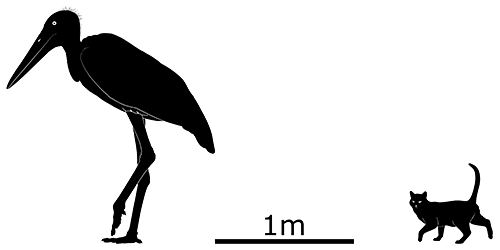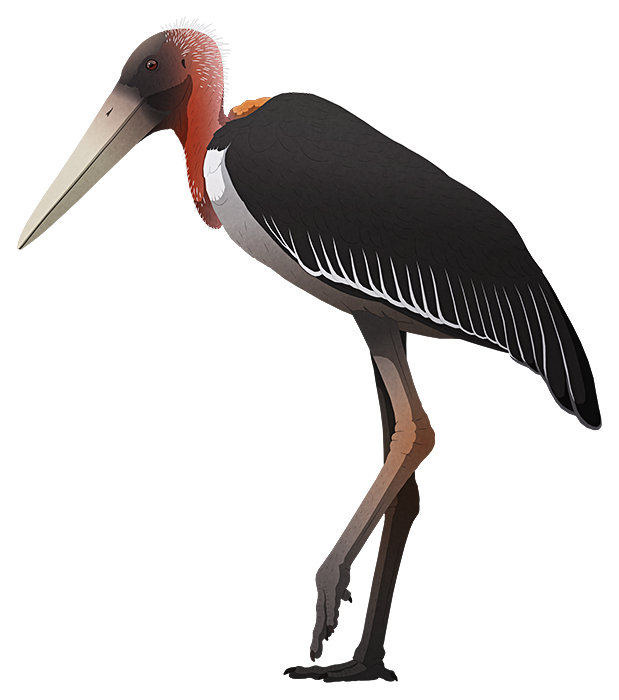Indonesia is located at the junction between several tectonic plates, and as a result a large number of volcanic islands make up the region. While some of these islands have had land connections to Asia or Australia in the past, others are separated by deep ocean trenches and have been isolated with little movement of species between them.
The island of Flores in the southeastern Lesser Sunda archipelago was formed fairly recently – sometime in the last 15 million years – and has been home to some highly unusual endemic species, including dwarf elephants, giant rats, Komodo dragons, and diminutive “hobbits”.
Leptoptilos robustus was a huge stork, closely related to the living marabou and adjutants but estimated to have been at least 20% larger. It would have stood around 1.8m tall (5′10″) and had a chunkier build with unusually heavy thick-walled bones, suggesting it may have become functionally flightless. Only fragmentary arm bones were found, however, so its unknown whether its wings were reduced in size or not.
There were few large carnivorous mammals on Flores (possibly none), and Leptoptilos robustus would have had little competition for carrion and prey. It may even have filled an ecological niche similar to the giant Hatzegopteryx of Cretaceous Hațeg Island – a large terrestrial stalking predator eating any smaller animals unfortunate enough to fit into its mouth.
The known remains date to the Late Pleistocene, around 50,000 to 20,000 years ago, and this giant bird seems to have gone extinct sometime during that date range. It’s unclear what killed it off, but possible factors include a changing climate on the island, a major volcanic eruption, and the arrival of modern humans.


